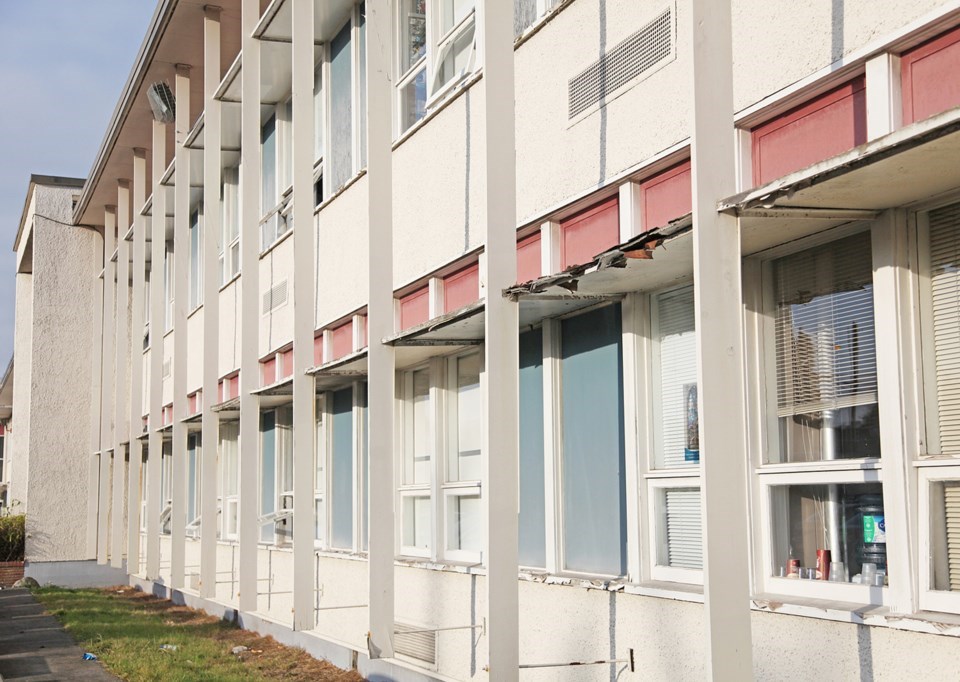Demolition of the old New Westminster Secondary School has been delayed by the discovery of more asbestos than anticipated.
“We have run into a considerable amount of additional abatement that we’ve had to do, which has slowed us down a little bit,” Dave Crowe, the school district’s director of capital projects, told trustees at their Oct. 4 operations committee meeting.
The asbestos was found in the old Pearson wing of the school.
The district was already aware of asbestos in the 70-year-old high school building. But Crowe said the newest discovery was “hidden stuff” that had run down from the ceiling — where its presence was known and expected — into the walls. Work is now being done to determine the extent of the asbestos in that wing.
Crowe said there’s a “tremendous amount of containment” inside the building. He assured the board that all work is being done in accordance with WorkSafeBC requirements to ensure that no one is exposed to asbestos in any way whatsoever.
“That’s why the process is slow, laborious, meticulous,” he said.
The whole process has delayed the exterior demolition by three weeks to a month, he said. People should start seeing visible signs of demolition by late November or early December.
The asbestos abatement will also cost the district more money than anticipated — but it’s not yet known how much.
“Is it just one or two classrooms or is it all the classrooms? We don’t know that yet,” Crowe said, “so the impact on the budget is still of a bit of a debate. But, yes, there will be impact on the budget.”
The entire NWSS project, including construction of the new high school and demolition of the old one, came with a budget of $106.5 million. As of when students moved into the new school in January 2021, the district had spent $88.5 million of that — leaving $18 million for demolition and the post-demolition work on the site.
Old NWSS site will be turned into a memorial park
The site is ultimately planned to be turned into a memorial park recognizing the history of the property.
That park, which is planned to be built in phases over the next three years, will include greenery, pathways and a number of tributes — by way of art and signage — to the original uses of the land.
The current school, which opened in 1949, sits on a cemetery that was used between 1860 and 1920 as a potter's field where bodies of the poor, prisoners, stillborn babies and patients from Woodlands and Essondale (which later became Riverview) were buried. The land was also used by Chinese, Sikh and Indigenous communities to bury their dead.
The first phase of work on the memorial park comes with a budget of $1 million.
Follow Julie MacLellan on Twitter @juliemaclellan.
Email Julie, [email protected]



